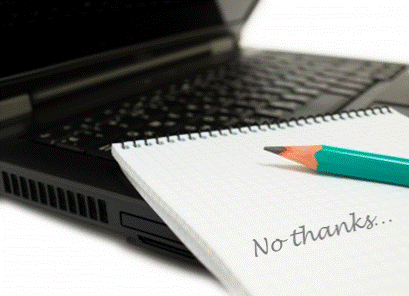Being nice with your guest post refusals
 Whether or not you want them, as your blog gets older and more popular it is extremely likely that you will be offered guest posts for your blog.
Whether or not you want them, as your blog gets older and more popular it is extremely likely that you will be offered guest posts for your blog.
And assuming you want to maintain a certain standard (in writing quality, content value and staying to a style and topic range), you will need to reject some, if not all, of those offers.
I’m not going to cover why we should reject posts nicely – or reject them at all rather than just ignoring them – that’s a topic for another day. And I’m ignoring obvious spam for this post, too.
Rejecting with respect
The key to refusing a guest post nicely is to be polite and respectful.
Even if the guest post is irrelevant to you or low quality, someone has taken the time to write a post and submit it to you. If they have really tried, they will have an emotional attachment to the post and your response.
How to reject professionally
- be polite
- use their name with a greeting – “Hi Sam”
- thank them for their submission
- don’t use derogative or insulting words
- show respect
- show you have a reason for the rejection – it doesn’t have to be in detail but adding ‘we don’t accept guest posts’, ‘we only use posts on this topic’ or ‘your post doesn’t suit our style/audience’ makes the rejection less personal and lets them know how to avoid the same mistake
- don’t be insulting, rude or patronising
- write a proper response – a single ‘no thanks’ looks lazy and disrespectful so use proper sentences
- be positive where possible
- if you list faults with the submitted post (such as if you like their information but want the writing improved before you could use it), start and finish with positives about the post
The rejection note doesn’t have to be long as long as it is respectful and makes sense – a greeting, one or two sentences and an ending is enough.
Example rejection notes for a guest post
Hi Sam,
Thanks for submitting your “how to treat frog fungal infections” post. It was well written, however, my blog only accepts posts on business related topics.
Kind regards,
Tash
Hi Mary,
I received your guest post yesterday, thanks. I won’t be using your post in my blog because it doesn’t meet the guidelines for guest posts.
Cheers,
Tash
Thanks Phoebe.
Your guest post, Measuring your social media ROI, was fascinating and well suited to my blog. However, I found it a little hard to understand at points and a couple of sentences seem to stop mid-idea. The questions you posed were thought-provoking so I would be interested in seeing a revised version.
Hope to hear from you soon,
Tash
Hi Bob,
While I appreciate you sending me a guest post I don’t think it suits my audience so I have removed it from my inbox.
Regards,
Tash
* image courtesy of 123rf



Recent Comments